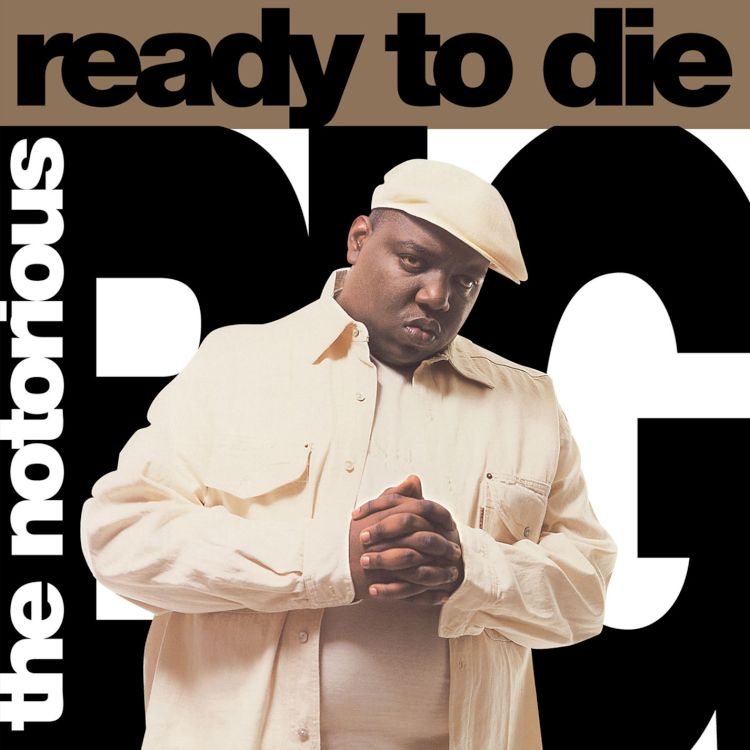Biggie Smalls Ready To Die Album
- Steve Huey from AllMusic gave it five stars, stating 'The album that reinvented East Coast rap for the gangsta age, Ready to Die made the Notorious B.I.G. Today it's recognized as one of the greatest hardcore rap albums ever recorded, and that's mostly due to Biggie's skill as a storyteller'.
- In 1994 When 'Ready To Die' First Came Out It Was Everywhere, If You Lived In New York(The Same Way That 'Get Rich Or Die Tryin' Was In 2003). I Was A Kid Back But When I Got 17, I Decided That I Would Buy It But Unfortuately The CD Was Pulled From Stores Because Of The Ohio Players Sample On The Title Track.
Ready To Die Full Album

Ready To Die Album Download


On the 20th anniversary of Biggie's death, we take a look at 15 amazing facts about the iconic 1994 project - the only studio album he released while alive.
1. Biggie never wanted to record 'Juicy'.
His manager, Mark Pitts, is quoted as telling MTV; 'During Junior M.A.F.I.A. and making the Lil’ Kim album, going into Life After Death, that was a new Big. In the beginning he was trying to figure [the rap game] out. Even making his records on Ready to Die, it’s a lot of joints he didn’t want to do, like 'Juicy.'
2. It is NOT Biggie on the cover of Ready To Die.
The baby is now a 20-year-old basketball player called Keithroy Yearwood living in the US. What did he make for appearing on the album that would go down in history and be regarded as one of the best albums ever to be made in hip-hop? $150.
3. The original Rolling Stones review of 'Ready To Die' read:
'Ready to Die is the strongest solo rap debut since Ice Cube's Amerikkka's Most Wanted. From the breathtakingly visual moments of his birth to his Cobainesque end in 'Suicidal Thoughts,' B.I.G. proves a captivating listen. It's difficult to get him out of your head once you sample what he has to offer.'
4. 'Ready To Die' wasn't certified platinum till after Biggie's death.
The album has an iconic status but many forget that it was actually a slow burner when it was released, having only moved 57,000 copies in its first week album sales. The album picked up momentum when Biggie dropped 'Big Poppa', but wasn't certified platinum till 1999, two years after Biggie's death.
5. The original New York Times review of 'Ready To Die' read:
'Though drug dealing carries tremendous heroic value with some young urban dwellers, he sacrifices the figure's romantic potential. His raps acknowledge both the excitement of drug dealing and the stress caused by the threat from other dealers, robbers, the police and parents, sometimes one's own. In presenting the downside of that life, Ready to Die offers perhaps the most balanced and honest portrait of the dealer's life of any in hip-hop'.
6. Biggie never won a Grammy for 'Ready To Die'.
Not for the album, or for any of its singles. In fact, it only received one nomination. It was for 'Best Rap Solo Performance' for 'Big Poppa', but ultimately lost out to Coolio's 'Gangst'a Paradise.'
7. Biggie was sued for copyright because of the samples used on the album.
A jury decided that Biggie and Puff illegally used samples in 'Ready To Die', 'Machine Gun Funk' and 'Gimme The Loot.' They were made to pay $2.8 millions in damages because of it.
8. The Source gave 'Ready To Die' five 'mics' 8 years after it was released.
In The Source's 1994 issue they gave 'Ready To Die' four 'mics', writing; 'Big weaves tales like a cinematographer, each song is like another scene in his lifestyle. Overall, this package is complete: ridiculous beats, harmonizing honeys, ill sound effects, criminal scenarios, and familiar hooks'. Eight years on from the album's release, and their original review, they bumped it up to a 5 mic rating.
9. Biggie was dealing drugs in-between making 'Ready To Die'.
When Biggie's executive producer, Puff Daddy, was fired from Uptown half-way through recording the album he was left in no mans land. Biggie went back to drug dealing in North Caroline before returning the the studio a year later on Puff's Bad Boy Records label.
10. Biggie started memorizing his lyrics during the making of the second half of the album.
First his break from making the album, Biggie would write all of the lyrics he created down in a notebook. But after returning to record the second half a year on, he would record the raps entirely from memory, never writing his lyrics down.
11. What was the first song Biggie recorded off 'Ready To Die?
The album's titled track, of course.
12. Biggie was only 21-years-old when he recorded 'Ready To Die'.
Biggie was born on 21st May 1972. Recording on the album began in 1993, and it was released in 1994. Picture: Rex
13. The meaning behind the 'Juicy' Lyric; 'To all the teachers that told me I'd never amount to nothing'
Biggie's teacher told him that he would likely be a garbage collector when he was older, his mum recalls Biggie telling the story of how he did some research and got back to the teacher the next day, saying; 'A teacher makes a starting salary of $22,500. A garbage collector starts at $29,000…You said some of us inside here are gonna be garbage collectors. But we're gonna be making more money than you, so that's cool.' Picture: Rex
14. It Was Puff Daddy aka Sean Combs that heavily shaped 'Ready To Die'.
Biggie wasnted the album to be full of heavy rap and rough around the edges, it was Puff Daddy who at the time convinced him to make more commercial songs and appeal to a wider audience.
15. Q Magazine only gave 'Ready To Die' 3 out of 5 stars in its original review.
The review said: 'The natural rapping, clever use of sound effects and acted dialogue, and concept element (from a baby being born at the start to the fading heartbeat at the end) set this well apart from the average gangsta bragging'.
Sep 8, 2014 - The Notorious B.I.G.' S debut album began the legend of Brooklyn's begotten son. Still, upon closer look 20 years later, Ready to Die has some.